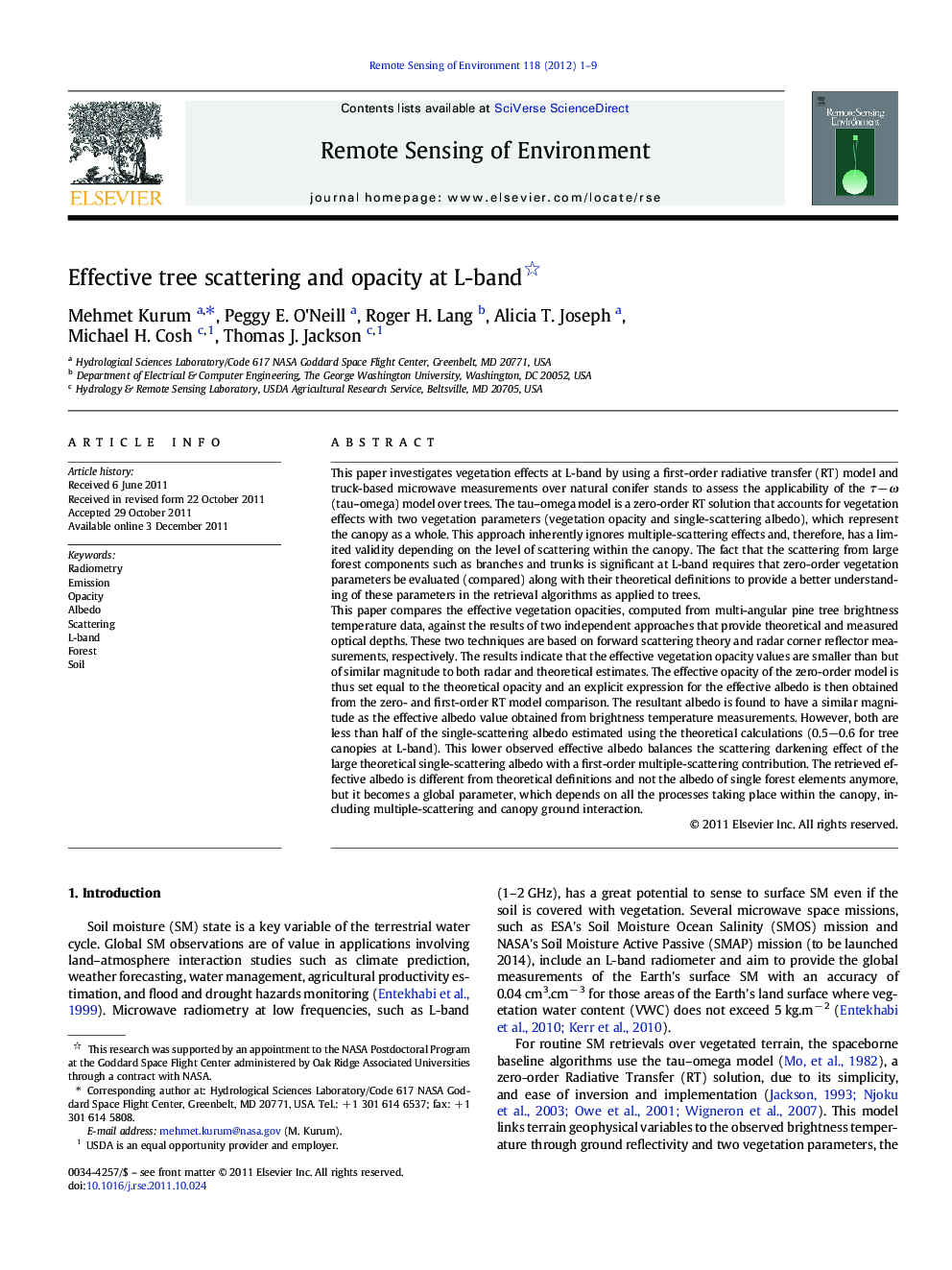| کد مقاله | کد نشریه | سال انتشار | مقاله انگلیسی | نسخه تمام متن |
|---|---|---|---|---|
| 4459321 | 1621282 | 2012 | 9 صفحه PDF | دانلود رایگان |

This paper investigates vegetation effects at L-band by using a first-order radiative transfer (RT) model and truck-based microwave measurements over natural conifer stands to assess the applicability of the τ − ω (tau–omega) model over trees. The tau–omega model is a zero-order RT solution that accounts for vegetation effects with two vegetation parameters (vegetation opacity and single-scattering albedo), which represent the canopy as a whole. This approach inherently ignores multiple-scattering effects and, therefore, has a limited validity depending on the level of scattering within the canopy. The fact that the scattering from large forest components such as branches and trunks is significant at L-band requires that zero-order vegetation parameters be evaluated (compared) along with their theoretical definitions to provide a better understanding of these parameters in the retrieval algorithms as applied to trees.This paper compares the effective vegetation opacities, computed from multi-angular pine tree brightness temperature data, against the results of two independent approaches that provide theoretical and measured optical depths. These two techniques are based on forward scattering theory and radar corner reflector measurements, respectively. The results indicate that the effective vegetation opacity values are smaller than but of similar magnitude to both radar and theoretical estimates. The effective opacity of the zero-order model is thus set equal to the theoretical opacity and an explicit expression for the effective albedo is then obtained from the zero- and first-order RT model comparison. The resultant albedo is found to have a similar magnitude as the effective albedo value obtained from brightness temperature measurements. However, both are less than half of the single-scattering albedo estimated using the theoretical calculations (0.5−0.6 for tree canopies at L-band). This lower observed effective albedo balances the scattering darkening effect of the large theoretical single-scattering albedo with a first-order multiple-scattering contribution. The retrieved effective albedo is different from theoretical definitions and not the albedo of single forest elements anymore, but it becomes a global parameter, which depends on all the processes taking place within the canopy, including multiple-scattering and canopy ground interaction.
► Assessing applicability of the tau–omega model for tree canopies.
► Determining effective values for tau and omega for conifer trees.
► Relating the effective parameters to their theoretical definitions.
Journal: Remote Sensing of Environment - Volume 118, 15 March 2012, Pages 1–9